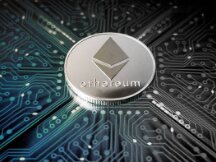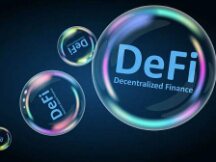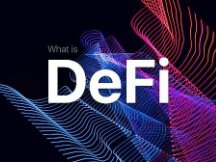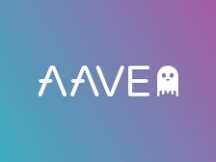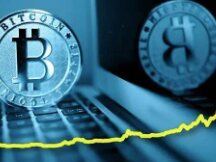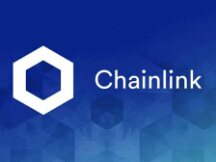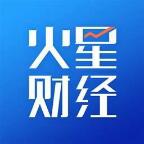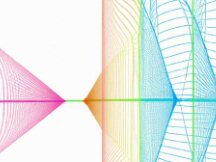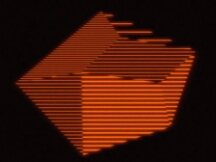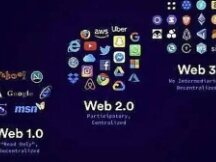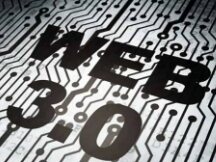Messari translation of serum: the stone of Solana DeFi's ecology
Decentralized Finance (DeFi) has "remixed" a wide range of traditional finance (TradFi) in just a year, including loans, equipment, inventory, and more. However, there is one important point that does not cross all the differences. It's an exchange of commands.
Serum is a decentralized exchange based on Solana that aims to change the exchange rate potential in a decentralized market. Serum's "Central Limit Order Book" is one of the leading chains capable of delivering similar results. From in-game marketing to multitasking, it can be the driving force behind the next generation of businesses. To better understand the prospects and risks of this preference, let's take a look at the general context of environmental trading, Serum's place in it, and what the Updated Market Token (SRM) means for traders.
Brief history of decentralized exchanges
From Nasdaq stocks to Coinbase cryptocurrencies, most modern assets are easily accessible through orders. The order book order process is very simple, the merchant can place the order, tell the trading partner the quantity and price, and associate it with different types of book order. In general, ordering books makes a similar difference for buyers and sellers.
Most modern assets are traded through this process for some reason. First, the backlog gives users the ability to identify their own value and can place abandonments and restrict orders. It also offers great benefits to investors (reduction) and business introducers (no downside) in general.
In the early days of DeFi, many decentralized exchanges (DEXs) tried to replicate this backlog model in a way without chain confidence. Since 2012, LocalBitcoins announced one of the first DEXs to trade Bitcoin on a peer-to-peer basis powered by on-chain escrow technology called Hashed Time Locked Contracts. In 2016, EtherDelta announced the backlog exchange based on Ethereum's smart promise capabilities. Several trade decisions were made, including IDEX and 0x, and still bring in hundreds of millions of dollars in volume today.
However, most DEX trading packages today are set up by automated market makers (AMMs) rather than order exchanges. In fact, over 90% of conversions were done on Uniswap, Sushiswap or Curve, which are MA compliant. How is it created?
The answer is usually in practice. Faced with higher costs and slower payments, AMM-based protocols are easier to implement on smart contracts like Ethereum compared to manual exchanges. AMM also has some advantages such as acceptance of contracts, continuous marketing (especially long term legacy) and advanced user experience of “vending machines”. There are also drawbacks such as more losses than orders and constant loss which reduces the return on investment for financial service providers.
However, with Ethereum Layer 2 scaling going further and adoption by citizens like Solana, we need a new way to solve this problem. There is room for new orders which are divided into categories, good value for money and attractive to consumers.
Sérum: Scroll Paradigm Transformation
In August 2020, reaching the end of Ethereum known as "DeFi Summer", Serum began as one of Solana's first big projects. It was commissioned and supported by the Solana Foundation, Alameda Research, Sam Bankman-Fried and many others.
This project was designed to address many of the issues the group has encountered with DeFi over time. Due to the limitations of Ethereum, it was slow and expensive, many processes were profitable in the media and could not cross the chain. An AMM statement in the white paper addresses this issue.
Uniswap has quietly revolutionized DeFi, enabling business without manual controls.
The most important thing, however, is the need for automated marketing. AMM is a system without restrictions and without buy and sell orders, where you decide the price, size and direction you want to trade on the purchase order. AMM cannot provide revenue without double-sided, cannot choose to donate at a special price, cannot give at a price other than the current market value, choose size and no other support.
There is a solution to this. This is what other financial companies do. However, since DeFi usually does not have manual control and the ETH network is too slow and expensive to support, compare the apps and give yourself several functions.
At the heart of Serum is a complete order book made for Solana. The first CLOB (Central Limit Order Book) of the contract is a technology that allows users to communicate with each other in a reliable, unreliable and discreet manner. This contract is also independent of the assets. This means that all crypto assets (spot, derivative, synthetic, etc.) can be traded in the order book. In fact, with an update now called Serum Core, orders can now compete with financial assets, not just SPL tokens. Improvements to this contract will facilitate the development of derivatives and complexes of Serum.
Deciding according to Solana is the basis of the process. Solana's prompt checkout allows for the second exchange required for the order to work efficiently, and its low cost ($ 0.0001 per exchange) lowers the cost of the chain-connected transaction.
Most of the process signals run directly on the chain, but Serum also plans to have a network of nodes responsible for "hand crank switching", which includes comparative and ad hoc commands to perform certain services. Returning to node operations, nodes receive part of the product of the process and assume management responsibilities.
Serum is one of Solana's oldest and most successful DeFi projects, asserting itself as an integral part of the ecosystem. On the right, Solana's first bet seems to have paid off. Solana's DeFi ecosystem TVL has grown from $ 500 million at the end of June 2021 to nearly $ 14 billion today.
Basic configurability: liquidity as a service
In order to better understand the Serum, it is important to treat it according to the manual order support solution rather than the exchange itself. Serum has many variations of its own (called Serum DEX), but its open source environment allows DeFi protocol, games, dApps, and other applications to connect to Serum's capital layer to support their exchanges or exchanges.
In fact, many of Solana's core DeFi processes are saved in the Serum backend order book. For example, Raydium, Atrix, and Mango Markets are all open source, serum-based DEX frameworks. Although he has developed his own graphical user interface (GUI) and implemented new DeFi features (AMM features, new hardware, cross chains, etc.) in many situations, Serum is an important part of the design process. As Solana's DeFi continues to mature, many expect Serum's integration to continue to expand.

Serum charges a minimal fee for execution, so why aren't these processes auto-generated on orders?
There are two answers. First, manual chain priming is not easy. Technical and liquidity issues alone can lead to multiple teams experimenting. Second, where the real process costs are, Serum provides DeFi protocol with the Apple network that every process can use, reduce costs and improve user experience for users.
To see this, we assume that there are two protocol rules, DEX A and DEX B. Users of DEX A can place orders on the serum order form, which can be left unidentified. DEX B users interact with each other. In fact, such interconnections continue to occur between users of different functions of the Serum network, since they all use the same pool. The “estimated network impact” contributes to the depth of the business and the success of each participant's investment.
Regarding traction and protection
In less than a year since its inception, Serum has established itself as Solana's most important DeFi infrastructure to date. The process itself provides direct access to all of the $ 1.6 billion in closed assets, making it the second-largest DeFi project. Additionally, Serum's native token, SRM, is available in over 35,000 specialty wallets, which is more than many other rules.
The advantage is that it has become a DEX intermediary for many tasks in the ecosystem. Radium is an order from AMM, TVL exceeds $ 2 billion, total sales exceed $ 28 billion and Serum supports it. Atrix is another “Serum AMM” valued at around $ 500 million on TVL, and also developed directly from this contract. There are a lot of anonymous people.

Serum has kept its promise to become the pool's most important ecosystem by expanding its tentacles with the Solana project. Also, since most of the cost of the project is due to network issues, Serum is a good place for new competitors.
As the ecosystem moves along the chain, blood circulation needs to be restructured. Serum's first white paper clarified the terms of the joint venture and the agreement, identifying two of the “seven point” objectives. However, almost a year later, these features are still not in use.
Despite the delay, Serum can make a fresh start on the new channel. Their recent announcement of the development of a chain link to the Wormhole Bridge to support inter-chain access will be an important step forward for the ecosystem. They also partnered with Raydium to repay the cross assets. The cross-chain is full of old and new competitors, but Serum's existing capital and the power of the Solana blockchain can give them the edge they need.
One thing is certain. We are preparing for a DeFi swap in the coming months, and Solana and Serum all have to fight to keep their jobs. Achieving the tie rod connection can be a determining factor in future development.
Under the umbrella of the SRM token industry
The serum has two types of tokens. Serum (SRM) and Megasérum (MSRM).
Serum (SRM) is the main product of the process. This is a traditional Solana blockchain token (SPL token), but can also be exchanged as an ERC-20 token. We all provide symbolic value.
First, SRM tokens are priced low on commodities based on products equivalent to SRM assets in their wallets. For example, a non-SRM receiver charges 22 bps and a wallet with 1000 SRM charges 18 bps, saving 4 bps.
Second, SRM is also a symbol of managing authority. Although chain management has yet to be fully implemented, SRM token holders have started making recommendations and voting on the split and swap deals for the contract price. The third and most straightforward form of token identification comes from contract income. The revenue distribution agreement is as follows: 20% goes to GUIs or projects (like Raydium) and the remaining 80% goes to SRM “buy and burn”.
Buying and burning models is a simple and powerful way to generate valuable tokens with the use of blood. Every week, the smart contract collects 80% of its revenue at the time, buying SRMs at the store to open and burn tokens. This provides a kind of "bonus" to token holders to prevent token ejection and generate costs in the long run. Since Binance is a popular electronic device, it has been used frequently by many regulators, especially exchange bureaus such as Serum.
As of this writing, 2,437,373.95 SRM has been burned this year, which equates to burning almost $ 15 million (used in weekly exchange rates). On average, approximately $ 350,000 of SRM is spent each week. As expected, the buy and damage plans are tied to the blood of the DEX count.

The second tool of the contract is MegaSerum (MSRM). 1 MRSM is generated by locking 1,000,000 SRMs. The primary targets of MRSM are nodes, and each must have at least 10,000,000 SRMs and 1 MRSM to join. Additionally, MRSM holders may be more efficient compared to the same number of "locked" SRMs.
Identifying plan tokens is especially important for research. When the project started in August 2020, 10% (1 billion) of the total assets were closed and the remaining 90% (9 billion) were closed for one year. An additional 9 billion SRMs will be closed six years after the one-year closure period, for a total of 10 billion SRM tokens in circulation by August 2027.

Today, a few months after the vesting period, SRM's total assets were SRM 1.1 billion (11% lock-in), but the actual SRM in turn was SRM 133 million. This means that in addition to the 9 billion additional locked SRMs, more than 900 million SRMs are valued for early acquisition, closed in smart contracts, or cut off from tourism still held by the group's subsidiaries. The SRMs in circulation today represent only 1.3% of future equipment.
To understand how this number compares to the overall number, take a closer look at the Y2050 Tour's other Y2050 product portfolio. These include Curve (18.23%), Uniswap (41.66%), DODO (11.16%), dYdX (5.63%), 0x (84.55%) and Raydium (13.61%) ).
Although individual comparison is difficult, the differences in SRM are minimal as these processes have different tokennomics. For current token holders, this is a bit of a concern. Low liquidity will increase market volatility and future token releases will dilute existing traders.
Due to this low turnover rate, the total diluted valuation (FDV) process, including the large number of closed SRMs, is estimated at $ 75 billion. Despite the market downturn, Serum is worth more than the mixed FDVs of Uniswap, Sushiswap and Curve (three main DEXs) at their current price.
This has led to a broad discussion within the Serum community about the token swap project, which has gained traction in recent weeks. In particular, community members seem to want token distribution (such as VCs and other insiders), investment in financial contracts or other activities, and management. manages plans to move to DAOs. The team is starting to tackle some of these issues, but needs more answers.
devine
It makes no sense to make a prediction with the future of blood in mind. However, there are two important questions that need to be approached from a broader perspective.
First, what are the future expectations of the Solana DeFi ecosystem?
The recent explosion of career growth, growth and happiness around Solana should not be underestimated. Solana is not gone, it is unlikely that there will be a "flip", but she is a worthy competitor of Ethereum and will continue to develop a significant amount of smart contracts.
As Ethereum grows, Solana is also just the start of the curve and surpassed TVL's $ 5 billion a few months ago. If Solana's DeFi continues now (and via Ethereum), her TVL could surpass $ 100 billion in less than six months.

Second, what percentage of the growth of the Solana DeFi ecosystem will be bloody?
This is a more difficult question to answer. It relies on a variety of factors: constant change by key groups, resolving criticism from the community and protecting against new challenges (and the chain), two-to-three signing up.
Serum market volume (and SRM token value) over the past six months has followed Solana's DeFi development. The serum packaging industry has become more visible, but appears to have benefited directly from the expansion of the Solana ecosystem.

So, the bullish market situation is that as Solana's DeFi continues to thrive, Serum has become an important part of the product market for the entire ecosystem, winning the charge protocol and integrating SRM tokens. The result of the joint venture contract is a solid rift that could unite Serum as DeFi's main "Lego block" for the next several years. It is also a bet on the order DEX to further degrade the AMM policy.
The unfortunate situation, however, is that (a) Serum is losing market share as a large number of Solana's (and cross-chain) orders with the influx of new competitors, or (b) concerns about access tokens in the SRM environment. This places the project in a difficult position for distribution and return to investors.
Although Serum is the future, it is important not to forget the important journey of the project. In one year, the project has developed the real first order of the chain of command and is at the heart of the entire Solana DeFi ecosystem, costing billions of dollars to process. In many ways, Serum has managed to deliver on its promise.
Today, Serum is preparing for the next phase of market development: the expansion of the Solana ecosystem, the new DeFi infrastructure and interconnection. It is not yet clear whether Serum will remain the leader in the “liquid intermediates” industry. If so, the opportunities are great.

Scan QR code with WeChat
